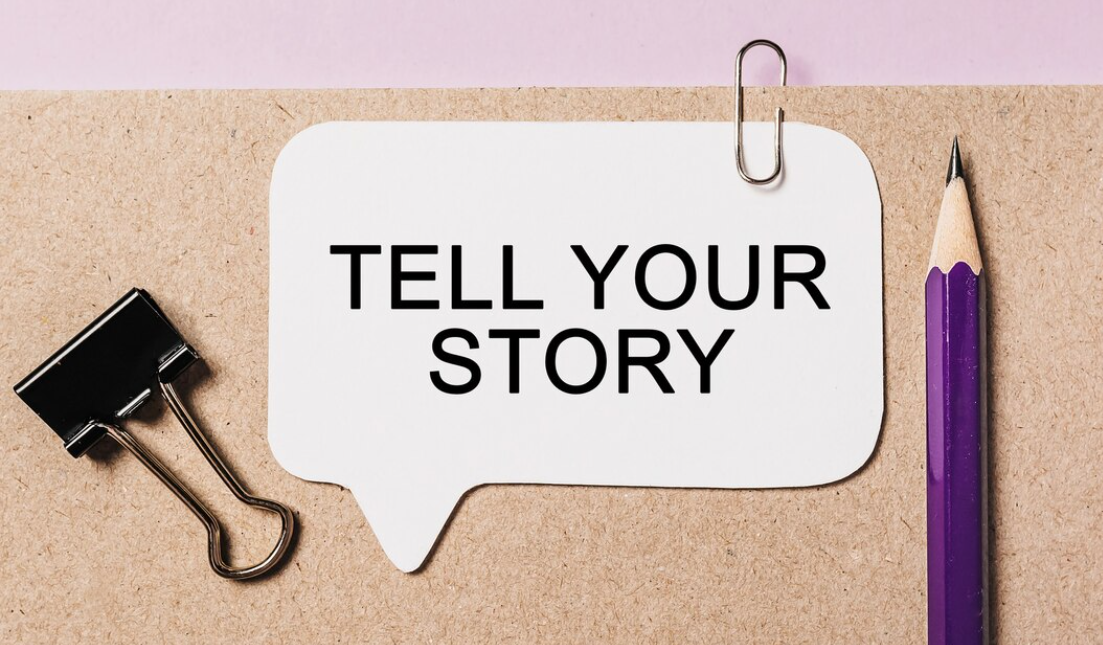
The true magic of an incredible story lies not only in its events but also in the artful revelation of those events. This process is no coincidence; skilled writers employ storytelling devices to captivate their readers. If you aspire to craft stronger narratives, these tools are a must-have in your arsenal.
Discover the essence of storytelling devices, their role in creative writing, and the common techniques you can adopt today. Unleash the power of storytelling and enchant your audience with every word.
Understanding Narrative Devices
A narrative device is a powerful writing tool that breathes life into storytelling. It amalgamates elements such as tone, point of view, and tense, crafting a cohesive narrative that guides readers through the tale. As you delve into your plot, characters, and setting, consider the genre and other narrative device examples to enhance your storytelling or emphasize your purpose. By harnessing various narrative devices, you can shape the point of view, theme, style, plot, and setting, and truly make your story come alive.
The Advantages of Using Narrative Devices
Narrative devices hold the potential to enrich the essence of a story. Within a piece of writing, encompassing elements like plot, setting, and characters, narrative devices serve as powerful tools to represent each facet. Embracing these devices yields several benefits:
- Providing structure: Narrative devices bestow structure upon your story, ensuring a consistent and engaging experience for readers;
- Highlighting meaning: Writers employ narrative devices to imbue their narratives with meaning. The strategic arrangement of information and diverse writing styles can shape the intended interpretation of the story;
- Connecting to readers: By selecting different narrative devices, you can forge varied connections with your readers. Beyond mere content, these devices allow you to directly address or artfully engage your audience on multiple levels.
Storytelling Techniques
At the core of every compelling tale lie five essential elements: a well-crafted plot, memorable characters, a vivid setting, a captivating conflict or challenge, and a meaningful message or purpose.
Beyond these fundamental components, the true magic of storytelling lies in how you weave the narrative together. Choose a plot structure that resonates, drawing inspiration from timeless narrative structures or archetypes to create a lasting impact.
Consider the basic elements as your key ingredients, with the story structure forming a solid foundation. Now, embellish your tale with storytelling or plot devices, the sprinkles on top, driving the narrative forward, shaping how information is revealed, directing attention, and evoking precisely the emotions you desire in your readers.
Techniques to Enhance Your Writing
| Narrative Device | Description |
|---|---|
| Chronological | Presents events in the order they occur, allowing for easy comprehension and mirroring real-life sequences. Flashbacks may be used to enrich the narrative. |
| Reverse Chronological | Starts from the ending and moves backward, captivating readers by unveiling the story in a unique and intriguing manner. |
| Real-Time | Unfolds events at the same pace, immersing the audience in the characters’ experiences. Often used in screenplays and plays. |
| Breaking the Fourth Wall | Characters directly address the audience, creating an engaging and interactive connection, blurring the line between performance and viewers. |
| Epistolary | Utilizes letters or journal entries to provide an intimate glimpse into a character’s emotions, thoughts, and reactions, fostering deeper understanding. |
| Documentary | Emulates real-life situations, capturing events as they occur with characters directly engaging the audience, resembling an interview. |
| Framing Story | Incorporates a story within a story, allowing for diversions and thematic exploration, offering a fresh perspective on the main narrative. |
| Stream of Consciousness | Offers insights into a character’s thoughts, perceptions, and emotions, allowing for a continuous flow of consciousness, adding depth to the story. |
Plot Devices

Narrative writing offers an array of captivating plot devices, often combined with other techniques to enhance storytelling across genres and styles. Here are some noteworthy examples:
- Plot twist: A sudden, unexpected event that dramatically alters the course of the narrative, such as the unexpected demise of the main character;
- Foreshadowing: Skillfully incorporating subtle clues that hint at future developments in the story, creating a sense of anticipation for readers;
- Unreliable narrator: A character whose inherent traits make them untrustworthy as a storyteller, adding depth and intrigue to the narrative. This device can be effectively combined with techniques like stream of consciousness.
Other Style Devices
In addition to plot devices, style devices play a vital role in shaping the language and tone of a narrative. Here are some examples:
- Allegory: Symbolism is used to represent real-life situations or societal issues, conveying a moral message within the story;
- Imagery: Sensory details are skillfully employed to vividly describe objects and scenes, immersing the reader or audience in the depicted world;
- Parody: Imitating and mocking other works or elements of society to critique or satirize certain aspects;
- Satire: Employing exaggeration, sarcasm, and irony to expose and ridicule particular qualities in people or situations, often targeting societal norms or behaviors.
Tips for Selecting a Narrative Device
When choosing a narrative device for your story, keep these essential tips in mind:
| Consideration | Description |
|---|---|
| Point of View | Decide on the perspective—first person, third person, or second person—to establish a distinct level of intimacy with the reader. Use first-person for exploring a character’s thoughts and third-person for vivid imagery and detail. |
| Purpose | Clarify the overarching objective of your piece—conveying a moral message, employing parody, or adopting a documentary-style approach. Narrative devices can enhance your piece’s purpose. |
| Form | Contemplate the structure of your story—epistolary with individual journal entries as chapters or stream-of-consciousness without chapters. Consider how form complements your chosen narrative device. |
Experiment with These 9 Engaging Plot Devices
This list barely scratches the surface of all the plot devices available to you, but here are a handful of ideas to start inspiring your storytelling. While we refer to “the reader” throughout this section, these devices can be used in writing, filmmaking, or any other storytelling format.
1. Chekhov’s Gun
Chekhov’s Gun is a narrative technique that involves introducing seemingly insignificant details initially, but eventually, they become crucial to the story. This concept originates from the ideas of playwright Anton Chekhov, who emphasized that every element in a scene should have a purpose in the plot; otherwise, it shouldn’t be included. A classic example of this is seen in the movie “Signs,” where the glasses of water, seemingly an unimportant oddity, turn out to be the aliens’ weakness.
Using Chekhov’s Gun wisely in your story can have several benefits. By incorporating it early on, you can ensure that your story’s resolution doesn’t feel abrupt or forced. Instead, it adds a layer of coherence and logic to the narrative. Moreover, this technique can also serve as a clever form of foreshadowing, providing your readers with subtle hints of what lies ahead, enhancing their engagement and enjoyment of the tale.
2. Cliffhanger
A cliffhanger entails an unresolved ending, deliberately halting a story in the midst of a gripping event. By employing this technique, you tap into the profound human desire to discover how a situation concludes, effectively captivating the reader and encouraging them to remain engaged or return for further developments.
Cliffhangers are best utilized when aiming to create a suspenseful ambiance in your narrative. They can be strategically placed at any natural breaking point, be it the end of a scene, chapter, episode, or even in a book series, as a means to keep the audience eagerly desiring more. Occasionally, you can also employ a cliffhanger as the final ending, leaving room for interpretation, just as “Inception” did, where audiences were left uncertain about whether the main character was in a dream or reality.
3. Death Trap
In many stories, a villain seeks to harm, kill, or obstruct the protagonist. While in reality, they might opt for the most efficient method, such straightforward approaches often lack the excitement required for an engaging plot. Instead, storytellers often employ a death trap, crafting an elaborate and slow method to dispose of the main character. A classic example is someone being tied to train tracks, allowing the protagonist just enough time to devise an escape plan.
The strategic use of a death trap comes into play when the face-off between the protagonist and antagonist has been built up with suspense. In such instances, resolving the conflict too quickly would be unsatisfying. Hence, a death trap serves as an excellent tool to keep the audience on edge, wondering about the protagonist’s fate and what will unfold next. As a result, when the hero ingeniously manages to escape, the audience experiences an extra sense of satisfaction.
4. Deus Ex Machina
This storytelling device, known by its distinct Latin name “Deus Ex Machina,” traces its origins back to Greek and Roman theatre. It serves as a means of resolving a dramatic situation by introducing a powerful external force, historically represented by a god, to come to the rescue, often when all hope seems lost.
Knowing when to employ Deus Ex Machina is crucial in maintaining effective and believable storytelling. While some writers may use it as an easy way out when they can’t figure out how to extricate their characters from a predicament, it can be more impactful when used judiciously. Reserve this technique for moments when it genuinely enhances the story, like creating an intriguing plot twist or showcasing the true power of a character. The goal is to make it surprising yet plausible, avoiding a jarring and out-of-the-blue resolution. A notorious example of this approach is found in Lord of the Rings, where Frodo and Sam are rescued from Mount Doom by giant eagles, a choice that sparked controversy as these eagles had minimal involvement in the story until that point.
5. Flashback
Flashbacks entail disrupting the narrative flow to unveil a past event that holds significance to the current story. This technique serves as a means to provide backstory, context, or to disclose crucial information at precisely the right moment. A notable example is the movie “Slumdog Millionaire,” which skillfully employs flashbacks to reveal how the protagonist acquired knowledge of the quiz show answers.
When to employ flashbacks is whenever you wish to offer relevant character backstory. By incorporating a flashback, you can seamlessly weave in essential background details, providing the reader with a deeper understanding of the characters and their motivations. Furthermore, flashbacks present an excellent opportunity to reveal surprising revelations at precisely the most impactful moment, ensuring the reader receives crucial information at the perfect juncture in the story.

6. Foreshadowing
Foreshadowing in writing involves the skillful placement of subtle hints about future events in the story. Sometimes these clues are evident, allowing readers to speculate on the story’s direction, while other times, they are more delicate, rewarding attentive readers with a sense of satisfaction. An iconic example of foreshadowing is seen in “Star Wars: The Empire Strikes Back,” where Luke experiences a vision of wearing Darth Vader’s mask before the revelation that Vader is his father.
The judicious use of foreshadowing can serve several purposes. Firstly, it helps build tension and anticipation, teasing readers with what may lie ahead, adding excitement to the narrative. Secondly, it ensures that any plot twists feel organic and well-integrated into the story, avoiding the sense of surprises coming out of nowhere. Lastly, foreshadowing can be an enjoyable way to include small, hidden clues for observant readers who relish paying close attention to the details of the story.
7. In Medias Res
In many stories, exposition is utilized to establish the initial situation before delving into the core of the narrative. However, some stories take a different approach and begin “in medias res,” a Latin term meaning “in the midst of things,” which involves starting in the middle of the plot or action. This non-linear storytelling technique serves as an effective way to captivate the reader right from the start, leaving them curious about how the characters arrived at this point. A great example of this is the opening scene of “Breaking Bad,” where Walter White is seen running from the police without any explanation, and the backstory is gradually revealed later.
The choice to use in medias res arises when aiming to infuse energy and excitement right from the beginning of the story. It instantly piques the reader’s interest, creating a desire to unravel the events leading up to the current situation. Moreover, this approach can be particularly useful if you need to demonstrate to the reader why they should invest in the story before diving into extensive exposition. By plunging them into the heart of the action, you establish an immediate connection and curiosity that propels them forward through the rest of the narrative.
8. Race Against Time
Occasionally referred to as the “ticking time bomb,” the plot device of a “Race Against Time” instills a sense of urgency for your characters. Whether it involves an actual ticking bomb or the looming consequences of not achieving their goal within a set time frame, like Marty McFly in “Back to the Future,” this technique adds a thrilling element to the narrative.
Using the “Race Against Time” plot device injects heart-pounding suspense into your story, as readers anxiously wonder if the characters will succeed within the allotted time. The constant pressure to beat the clock keeps the audience engaged and invested in the outcome. Additionally, this approach serves as a fantastic method for maintaining an energetic pace in your story, with events unfolding rapidly to meet the imminent deadline. As a result, the “Race Against Time” creates a gripping and dynamic storytelling experience that captures the readers’ attention from beginning to end.
9. Red Herring
A red herring serves as a deliberate misdirection used to confuse or mislead the reader. This can take the form of a character initially perceived as evil but revealed to be good, or a seemingly important clue that later proves irrelevant. A classic example of a red herring is found in “Harry Potter and the Prisoner of Azkaban,” where the readers are led to believe Sirius Black is the antagonist, only to discover he was wrongly accused.
When to employ a red herring is when you wish to maintain suspense and keep the reader guessing until the very end, particularly in mystery or thriller stories. It serves as a powerful tool to manipulate the reader’s perceptions, making them believe something untrue, setting the stage for a surprising plot twist later in the story. By skillfully incorporating red herrings, you can heighten the intrigue and engagement of your readers, ensuring they are captivated by the twists and turns in the narrative.
Conclusion
Storytelling devices play a fundamental role in crafting compelling narratives that captivate and engage readers. Throughout this comprehensive overview, we have explored various storytelling techniques that writers can employ to enhance their storytelling prowess.
As writers, we must carefully select and master these storytelling devices to enrich our narratives and create unforgettable reading experiences. By understanding when and how to employ these techniques, we can skillfully manipulate emotions, build tension, and keep our readers spellbound throughout the journey. Incorporating these storytelling devices thoughtfully allows us to create stories that resonate deeply with audiences, leaving an indelible mark on their hearts and minds. So, embrace the power of storytelling devices, and let your imagination soar, as you embark on a journey to craft tales that will stand the test of time.